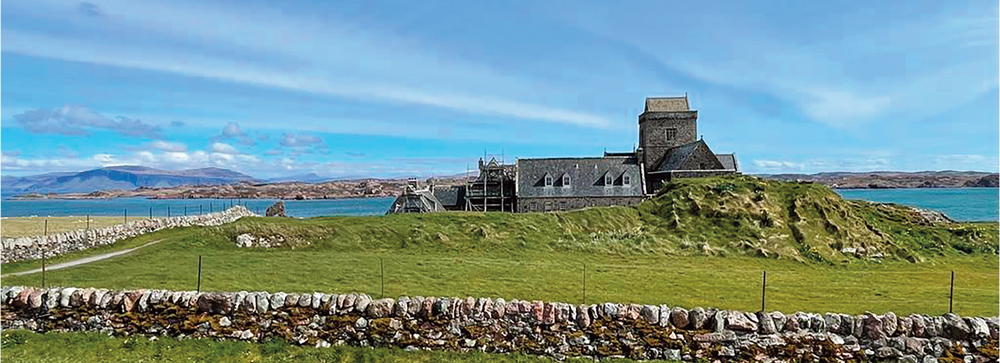Oban Bay Hotel, seen from our Ferry to Mull
I have arrived in what is now my most favorite place on Earth. It's Oban (OH-ben), its name means Little Bay. Tucked up in the northwest corner of Scotland, in the Argyll and Bute districts, and on the way to the Isle of Mull, it’s a beautiful bay and marina protected by surrounding islands, Lismore and Kerrera, and by the mountains of Morvern and Ardgour.
Our small group has travelled by bus from Edinburgh and through a large swath of Loch Lomand National Park. It’s spectacular Scottish Highland country with water and hills and valleys and wildlife. We have gone through four seasons of weather in one hour. Spring blooms while we are making our way through suburban Edinburgh. Sunshine heralds summer. Dark clouds bring rain to a fall like landscape typical of Scotland. Then the rain turns into snow that blankets the hills around us. The snow finally stops and we are seeing spring lambs everywhere. We arrive in Oban in time for lunch.
On the road through Loch Loman National Park, we pass through four seasons in one hour
After an educational tour of the Oban Distillery, we watch a sunset over the bay from our hotel sun deck. It’s still chilly so we are sitting inside having drinks before dinner. Tomorrow will be an early start. There will be two ferry rides to reach what is our ultimate goal—the island of Iona.
The first ferry will take about an hour to bring us to the isle of Mull. A bus meets us there to drive an hour to the other side of Mull. We pass through small towns and hillside farms. The population of Mull is about 3000. Tobermory is the largest town on the island and it is where we catch the second ferry that will take us for the short hop to what is the home of Iona Abbey.
Sunset over Oban Bay, Scotland
Left: The Ferry as seen from our hotel leaving Oban for Mull. Right: With my roommate, Millicent Fauntleroy, waiting in Tobermory for the ferry to Iona
Our intrepid travelers at Iona Abbey, now part of a worldwide community working for peace and social justice
This is where St. Columba arrived in AD 563. Iona is only three miles long and one mile wide. Settlements can be traced back to at least the Bronze Age, about 3,000 years old. With the arrival of Columba, who was born and educated in Ireland, a monastery begins. He founded other monasteries that became a kind of monastic federation. His life is well documented. His goal was to create the perfect monastery as an image of the city of Jerusalem. I visited Jerusalem in February 2020, with some of the same traveling companions. Benedictine monks and Augustinian nuns continued to inhabit Iona even after the Reformation of 1560 brought an end to monasteries all over Scotland. But, by the 1700s, Iona became a tourist destination. Today, all the buildings are in the care of Historic Scotland. The Book of Kells was produced on Iona around 800. Known as the great Gospel of St. Columba, The Book of Kells was created by a small team of monks working from the Vulgate, a version of the Bible completed around 400. The book is now displayed at Trinity College in Dublin. I saw it there on my trip to Ireland in 2016.
Much of the original Iona Abbey still exists
The ferry loading in Iona for the short hop back to Mull
And now I am remembering another ferry in another town with the name Tobermory. I was in Canada, coming back from one of my pilgrimages to Minnesota, my home state. Hobbes and I are taking the northern route around the top of Lake Superior, going north from Duluth, stopping at Grand Portage at the Canadian border. We drive to South Baymouth, Ontario. The ferry crosses the Georgian Bay in Lake Ontario, landing at Tobermory. So many connections, so many memories.
Hobbes, the road warrior, on one of our pilgrimages to Minnesota in 2005.









